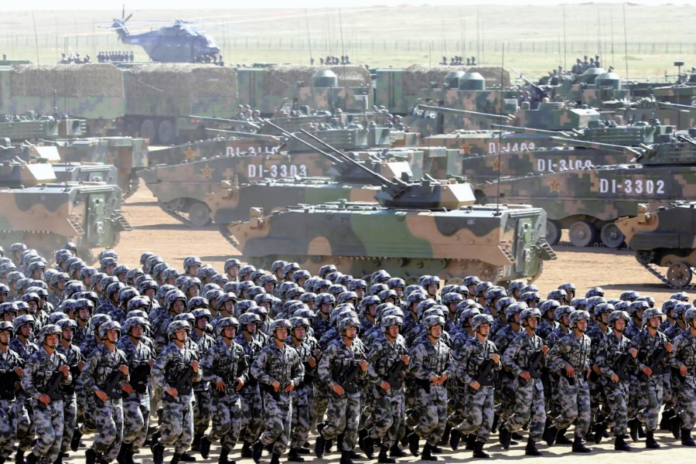With China threatening Taiwan with a possible invasion, the Indian armed forces have decided to look at the options and responses available for India in case such an eventuality does take place.
During a summit of top officers of the Indian military in Lucknow late last month, Chief of Defence Staff (CDS) General Anil Chauhan ordered a study into the possible responses India can take recourse to if China decides to attack Taiwan.
According to officials in the Indian military, the goal of this entire initiative is to have choices available in case a confrontation arises between China and Taiwan – plus of course, its allies.
The Indian armed forces have decided to go ahead with this move in response to persistent intelligence reports regarding China’s plans regarding its Taiwan policy from US and Japanese security services.
Given that India is a member of the QUAD alliance and has decided to re-evaluate its defence ties with the United States, this move by the CDS is regarded as being crucial. The US, Japan, and Australia are the members of the QUAD alliance.
A report titled “Mainland China airs documentary signalling military preparation for Taiwan attack and willingness to sacrifice” was published by the Hong Kong-based South China Morning Post (SCMP) last Saturday. The report essentially stated, “Beijing is trying to send strong signals about its preparation for an attack on Taiwan, with People’s Liberation Army soldiers pledging to sacrifice themselves.”
The SCMP report adds: “The documentary series offers a view – albeit restricted – of the PLA’s operation scenarios, such as seizing air superiority, sea control and information tech suppression before launching an amphibious landing.”
Senior military analysts have recently predicted that the PLA will act by 2027, the timeframe set for the PLA’s centenary aim of developing a world-class military, including former US Indo-Pacific Command Chief Philip Davidson. However, for the first time, India’s military strategists are considering developing plans to face scenarios arising out of a potential battle distant from its coastlines. Davidson’s warning is consistent with the US judgement.
Plans that are calibrated for several potential conflict scenarios will be developed as a result of the study. The study team, made up of members from all three services, has been instructed to consider possibilities in the event that the United States asks India for assistance.
In the event of a heated war in the Taiwan Straits, India’s position will rely on a number of variables, including the length of the fight, the involvement of other countries led by the United States, and the resistance put up by Taiwan.
For instance, under a foundational agreement like the LEMOA or Logistics-Exchange Memorandum of Agreement that the two countries signed in 2016, the US military may want to use India’s airfields and naval bases for refuelling, replenishment, and repair facilities in the early stages of the conflict.
LEMOA is essentially a facilitation agreement that sets down the fundamental terms, conditions, and procedures for the reciprocal provision of logistical support, supplies, and services between the armed forces of India and the United States.
Food, water, lodging, transportation, fuel, oils, lubricants, clothing, communication services, medical services, storage services, training services, spare parts and components, repair and maintenance services, calibration services, and port services are all examples of logistic support, supplies, and services.
Another scenario where a potential Taiwan war degenerates into a military standoff may necessitate India’s involvement beyond just giving the US military logistical support. The study will aim to provide an answer to the question of what form such a military operation can and should take in such circumstances, should India chose to open a second front for China in its southwest along the Himalayan Frontier.
Politicians and diplomats will have to decide whether or not to present China with a “two-front” dilemma, but the Indian military wants to be prepared with choices now rather than waiting for a real conflict to start over Taiwan, according to insiders.
This report, which must be finished within a certain time limit, is the result of recent, intensive discussions inside the Indian military over the lessons that the three armies should draw from the ongoing Russia-Ukraine war.



